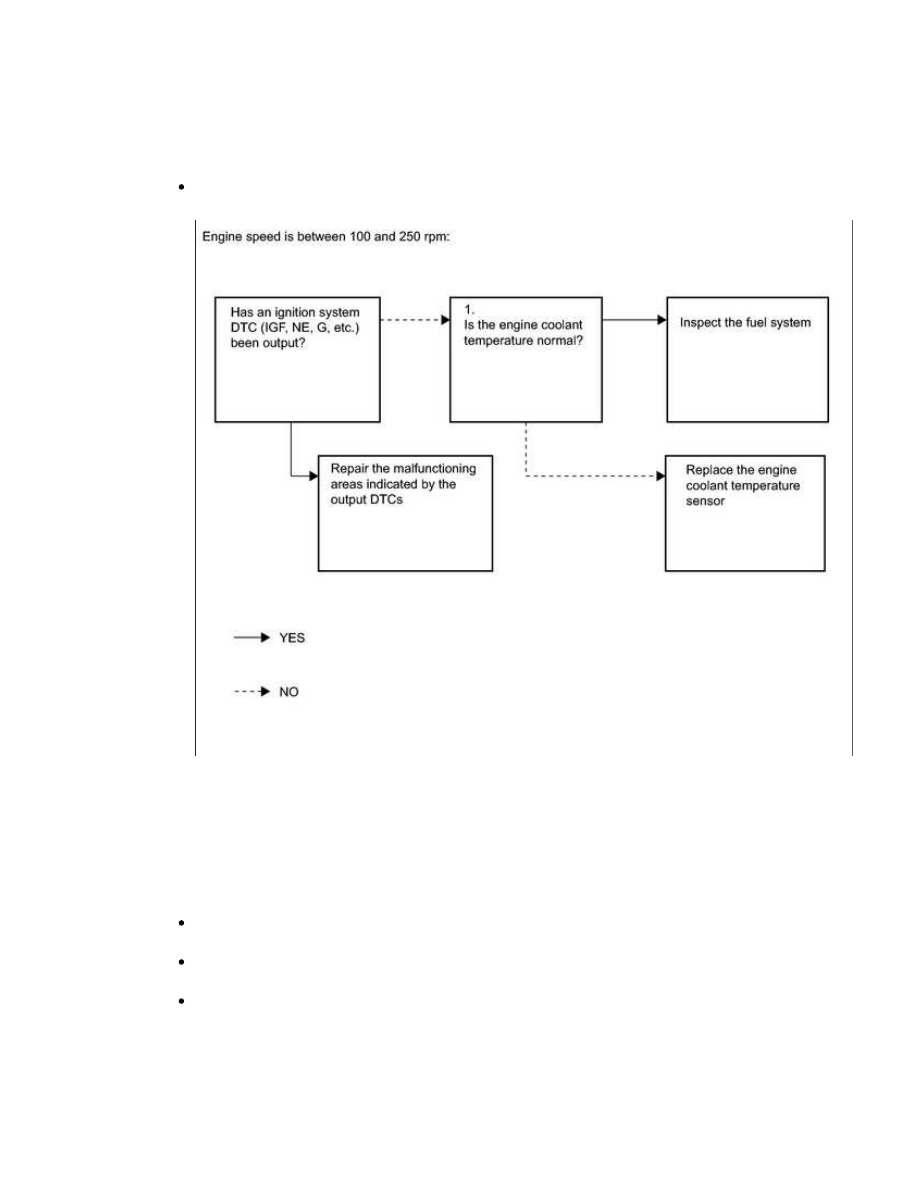Content .. 1233 1234 1235 1236 ..
Toyota Tundra (2015 year). Manual - part 1235

(2) All engine speeds recorded in the freeze frame data are between 100 and 250 rpm (the engine cranks but
there is no combustion).
HINT:
If the engine speed is between 100 and 250 rpm (no initial combustion), there may be a wiring problem or a
high or low and the engine may not be able to be started.
(3) The engine speed recorded in the freeze frame data is 250 rpm or higher (the initial combustion and starter
turnoff timing is too late).
HINT:
If the engine speed is 250 rpm or higher (combustion occurs but the initial combustion and starter turnoff timing
high or low and engine starting trouble may occur.
If Long FT is incorrect, there may be a fuel supply problem due to the injectors or fuel pump being
clogged, etc.
If the engine cranking speed is too high, compression loss may have occurred due to carbon
interfering with the valve operation.
1UR-FE ENGINE CONTROL SYSTEM: SFI SYSTEM: P1604; Startabi...